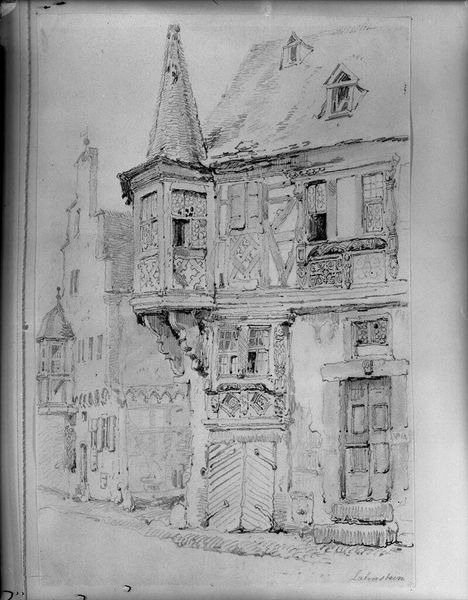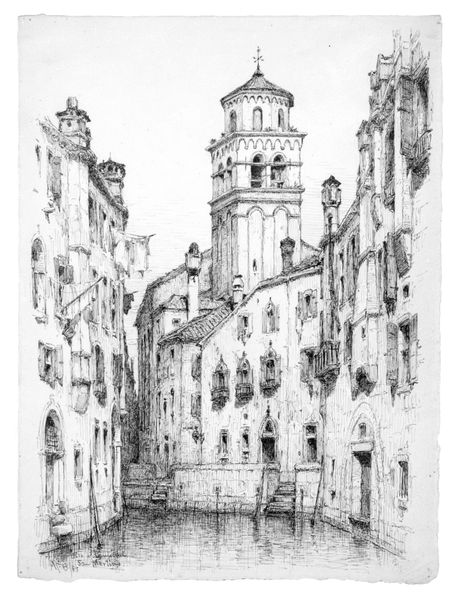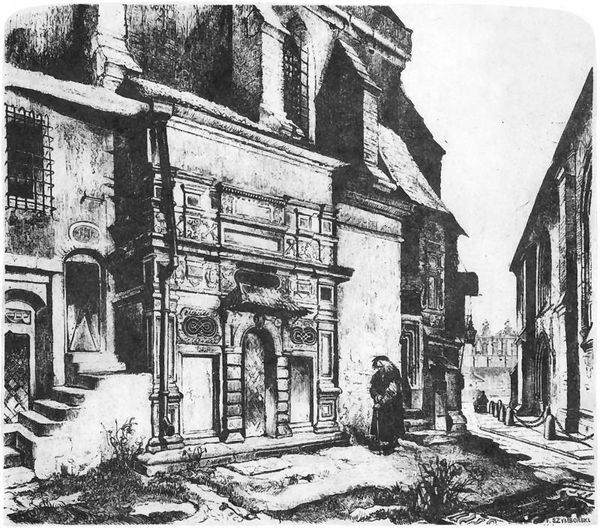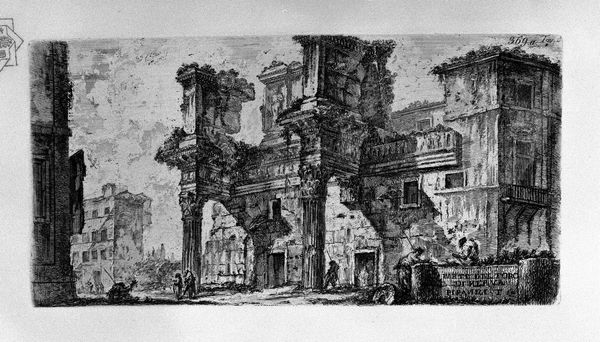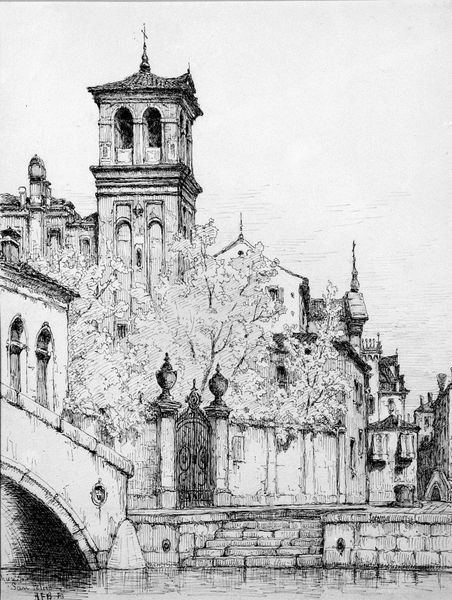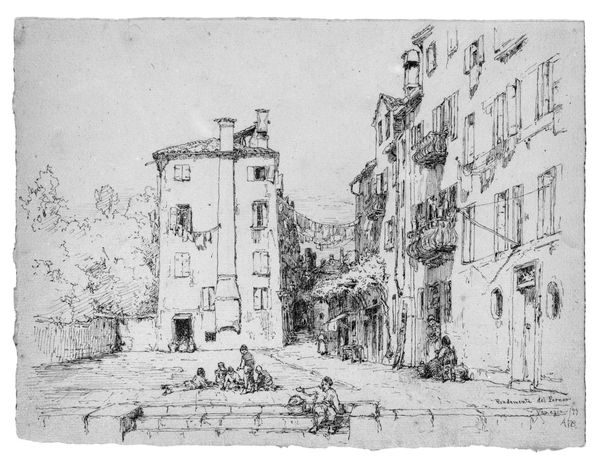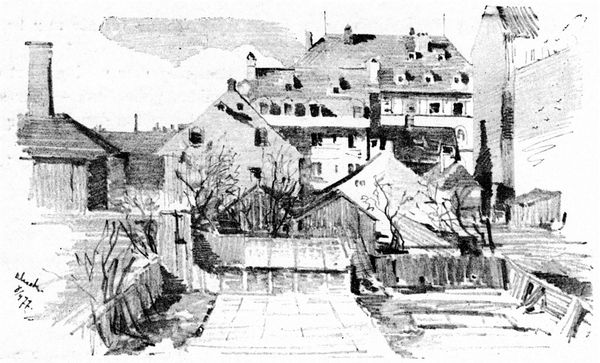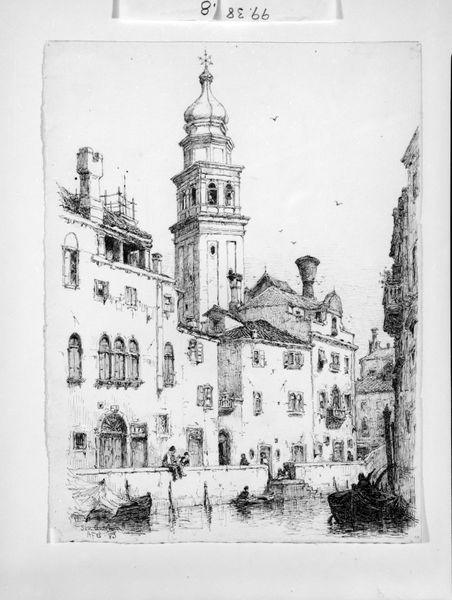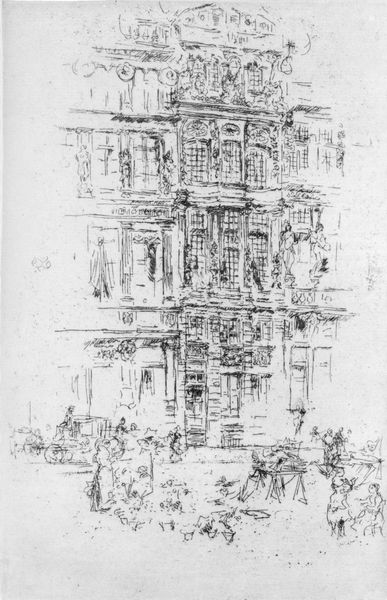
Sketch of Houses near SS. Giovanni e Paolo, Venice 1883
0:00
0:00
Dimensions: 12 15/16 x 9 3/4 in. (32.9 x 24.8 cm)
Copyright: Public Domain
Curator: Here we have Andrew Fisher Bunner’s “Sketch of Houses near SS. Giovanni e Paolo, Venice,” created in 1883 using pen, ink, and charcoal on paper. Editor: My initial reaction is one of intricacy. The textures achieved with simple lines are remarkable, creating a very detailed, almost dreamlike view of Venice. Curator: Precisely! The drawing showcases an intriguing interplay of light and shadow. Note how Bunner uses line weight to define forms and create depth, observing a balance and harmony within its representational approach. Editor: Beyond the artistic merit, this drawing acts as a time capsule. Consider Venice in 1883—a city steeped in history and art but also navigating significant social and political shifts following its annexation to the Kingdom of Italy just seventeen years earlier. Was Bunner consciously depicting a romanticized vision or something else? Curator: The very style lends itself to that perspective, wouldn’t you say? He favors the picturesque over any sort of harsh realism. There's an idealized sensibility that elevates this from mere documentary. Editor: That sensibility surely taps into Venice’s existing representation in art and literature—the wistful depictions in paintings, poems, and plays, which bolstered tourism and reaffirmed its iconic status for viewers from afar. The lack of people, perhaps, adds to that effect? Curator: True, their absence brings attention to the architectural forms themselves: see how Bunner subtly varies his strokes, providing the whole construction with character? It is like we're seeing a protagonist instead of a place, which only encourages subjective feeling. Editor: Perhaps that is the charm, then. Beyond formal construction and Bunner’s obvious technical skill, "Sketch of Houses near SS. Giovanni e Paolo, Venice" highlights the fluid, ever-shifting relationship between image, ideology, and urban experience. Curator: Indeed. Viewing it through both the lens of formal construction and historic position deepens our awareness of this work. Editor: A fine note to end on! Thank you.
Comments
No comments
Be the first to comment and join the conversation on the ultimate creative platform.
